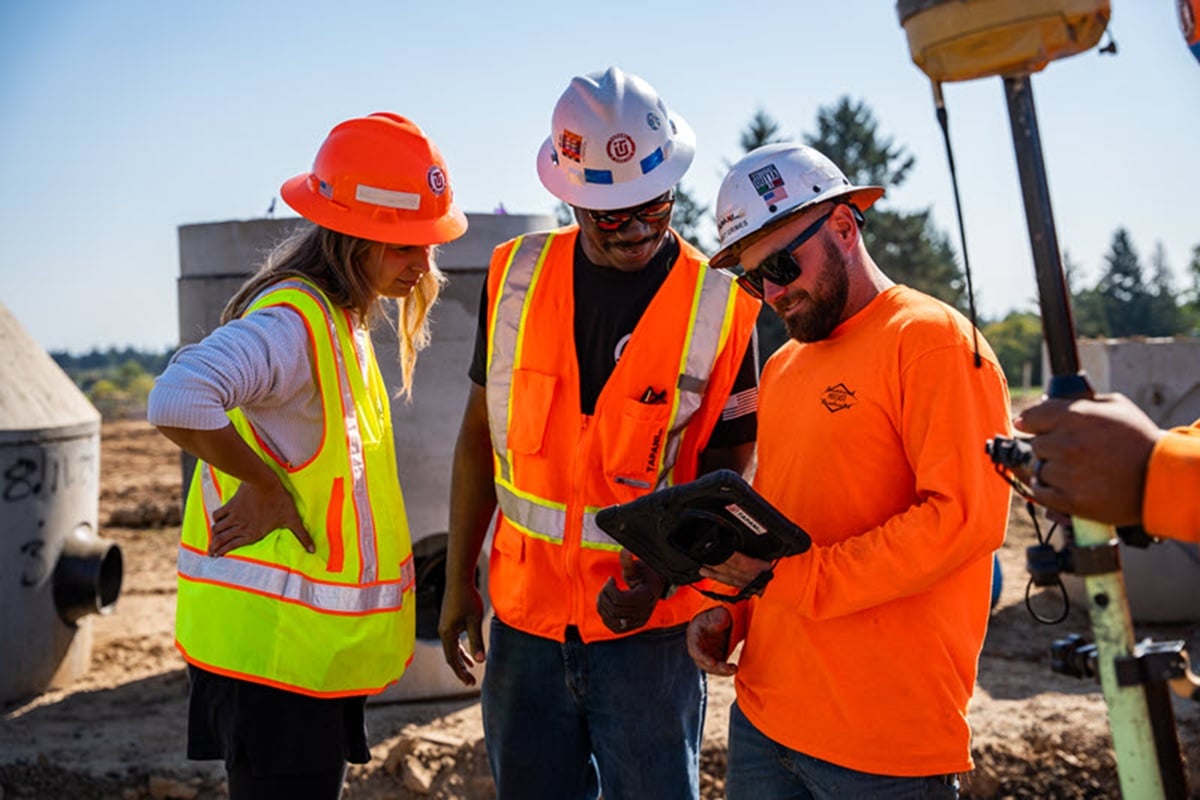Software Allows Companies to Manage Operations in the Office or On-the-Go

One way contractors are able to do this is through implementing software systems to streamline their operations. With software designed for construction companies, the many pieces and parts that allow a business to succeed are managed in one place — whether you’re in the office or on the jobsite.
“In the year 2015, you run the risk of being at a competitive disadvantage if you are not efficient in all aspects of your operations,” says Tom Webb, HCSS Vice President of Strategy/R&D. “Software can help you get there. For instance, it was fine in 1995 to wait a week or so for your accounting system to create job cost reports so you can see how you are doing. Today, working poorly for a week or so may take most of your profit out of a job. Daily job cost is the new norm.”
When it comes to software, there are programs to assist companies throughout the whole construction process — from estimating and bidding to project completion and equipment maintenance. In a market full of competition, it’s important to start with a strong estimate.
“Since construction is a margin-pressured space where there are a lot of competitors, these tools are vital from the start,” says Paul McKeon, CEO of B2W Software. “The estimate really is the heart of everything, so you need an effective and complete one right out of the gate.”
After a job is awarded, companies can rely on software programs to manage the day-to day operations that allow a project to run smoothly. Seeing these numbers the software provides allows a business to keep an eye on a project’s development and how it’s progressing against the original estimate.
“Field software has become the norm for tracking work on a job, so that you can get daily feedback on the job’s budget, production and safety,” says Webb. “Planning and scheduling software helps you coordinate your resources and effort between all of your jobs.”
Other software tools include those that assist in equipment dispatch (so you know which machines are where) and upkeep, such as repair and routine maintenance. These programs ensure that preventative maintenance is being done at the appropriate times to avoid any serious breakdowns and costly downtime. They also help crews effectively allocate their iron assets.
“When you’re managing a heavy equipment fleet, you want to maximize the uptime of your assets, and you can’t effectively do that if you’re constantly sending mechanics out to fix something,” says McKeon.
Implementing a System
With an abundance of offerings from B2W Software and HCSS to Dexter + Chaney and Viewpoint, it’s important to do your homework before purchasing a system that may not fulfill your needs. Webb suggests asking other companies you know and respect what they use and would recommend. It’s also good to lay out your expectations for the software and test it out in small increments.
“Make sure you know the ROI you expect from the software before you buy it and don’t get lost in the details that will not give you a return,” says Webb. “When implementing a system, focus on a pilot group first. That’ll tell you what works well and doesn’t before you waste everyone’s time. Also, make sure you get advice from the software vendor — this is often not their first time to roll it out [unlike you].”
Since construction often takes contractors to remote areas with little or no internet connectivity, software with the ability to work offline is imperative to keep the workflow from being interrupted.
“With the advent of tablets and smartphones, technology has evolved so people are always in a connected environment,” says McKeon. “You’ll need software that’s smart enough to work with these tools in a disconnected fashion if you find yourself on a jobsite where there isn’t any connectivity. The right software gives you complete visibility into anything going on in the office from your device. This allows you to do your job whether you’re in or out of the office.”
In a business full of time sheets, balance sheets and everything in between, software assists in wrangling in all your company’s information into a manageable operating asset. Finding the right fit for your company’s needs will offer peace of mind and have a great impact on your bottom line.
McKeon concludes, “All of these tools are designed to make people more accurate, more effective and, ultimately, more profitable.”
Pam Kleineke is the Managing Editor of Utility Contractor.




